A greenhouse dining room marries the transparency of glass architecture with an immersive botanical setting, using skylights and full-panel glazing to flood interiors with natural light. Vertical plant installations and hanging planters maximize greenery while adding sculptural texture to walls and ceilings. Sustainable touches like reclaimed wood tables and rattan furniture introduce warmth and storytelling into the space. Statement lighting—whether a grand chandelier or minimalist pendant—anchors the dining room’s focal point, enhancing evening ambiance. Combined with practical features such as heated floors, functional bench seating, washable rugs, and seamless indoor-outdoor transitions, these greenhouse dining room ideas create a year-round sanctuary for memorable meals.
Step inside a world where botanical beauty meets culinary delight: a greenhouse dining room idea transforms everyday meals into an immersive garden experience. Drawing on a blend of design expertise and innovative trends, these concepts range from architectural glazing to living plant walls, ensuring your dining room feels simultaneously elevated and grounded. Whether you’re seeking a sleek minimalist frame or a rustic wooden enclave, these ideas prioritize natural light, verdant textures, and year-round comfort. Prepare to explore features that will brighten, warm, and personalize your greenhouse dining room, setting the stage for unforgettable gatherings under glass.
1. Glass-Roofed Dining Oasis
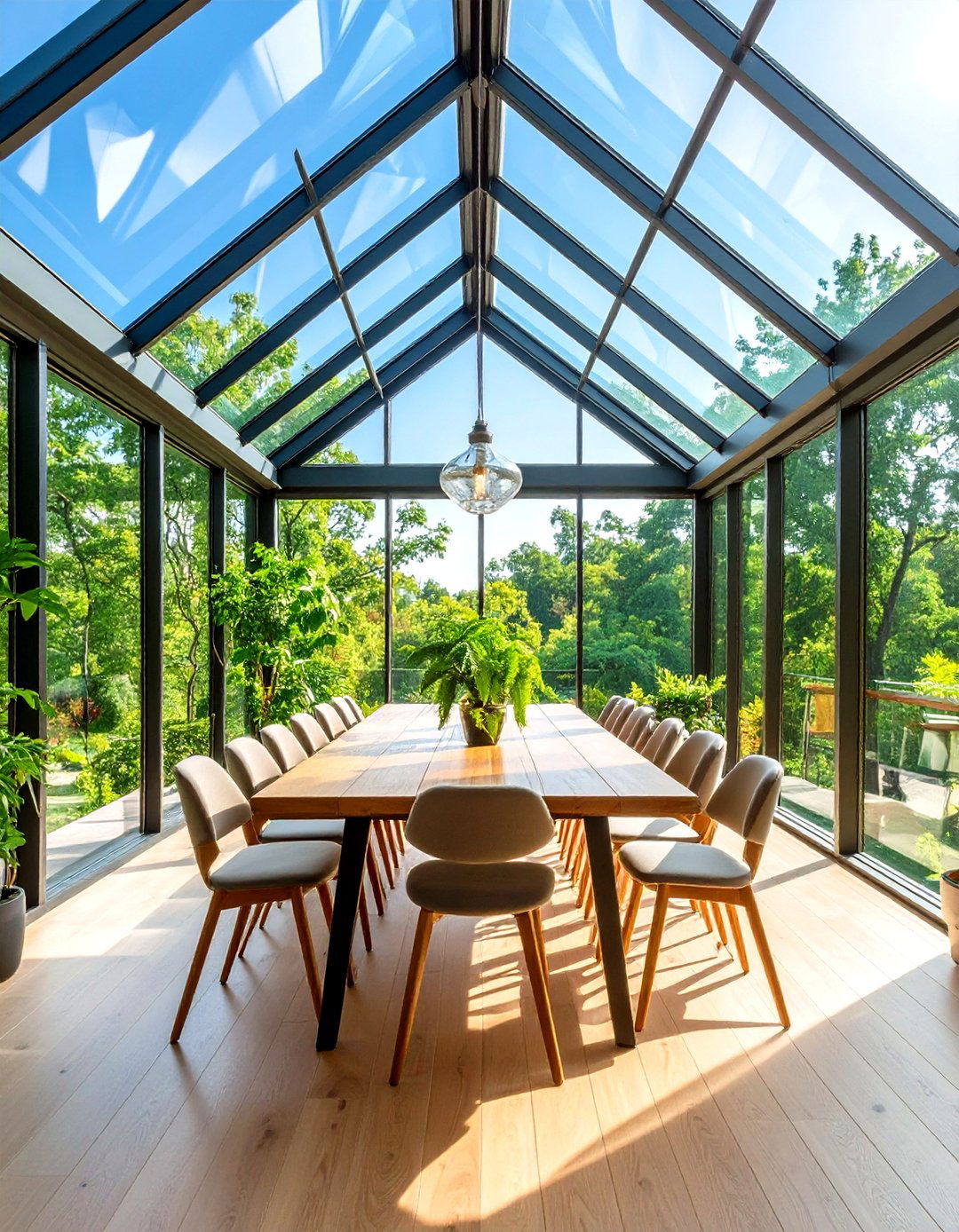
A glass-roofed dining oasis leverages a pitched greenhouse ceiling to bathe your dining room in daylight, creating an uplifting, sunlit sanctuary. This feature, inspired by classic Victorian greenhouse designs, uses expansive glass panels and slender metal frames to maximize skyward views and blend seamlessly with the garden beyond. Complement this architectural transparency with tempered low-iron glazing to reduce UV distortion while maintaining clarity. For midday sun, install subtle roller shades or shade sails that preserve views and mitigate glare. Integrating humidity-resistant materials and corrosion-proof fittings ensures longevity in moist greenhouse conditions. This glass canopy not only brightens your dining room but also cultivates a dynamic interplay of light and foliage throughout the day.
2. Skylit Greenhouse Dining Retreat
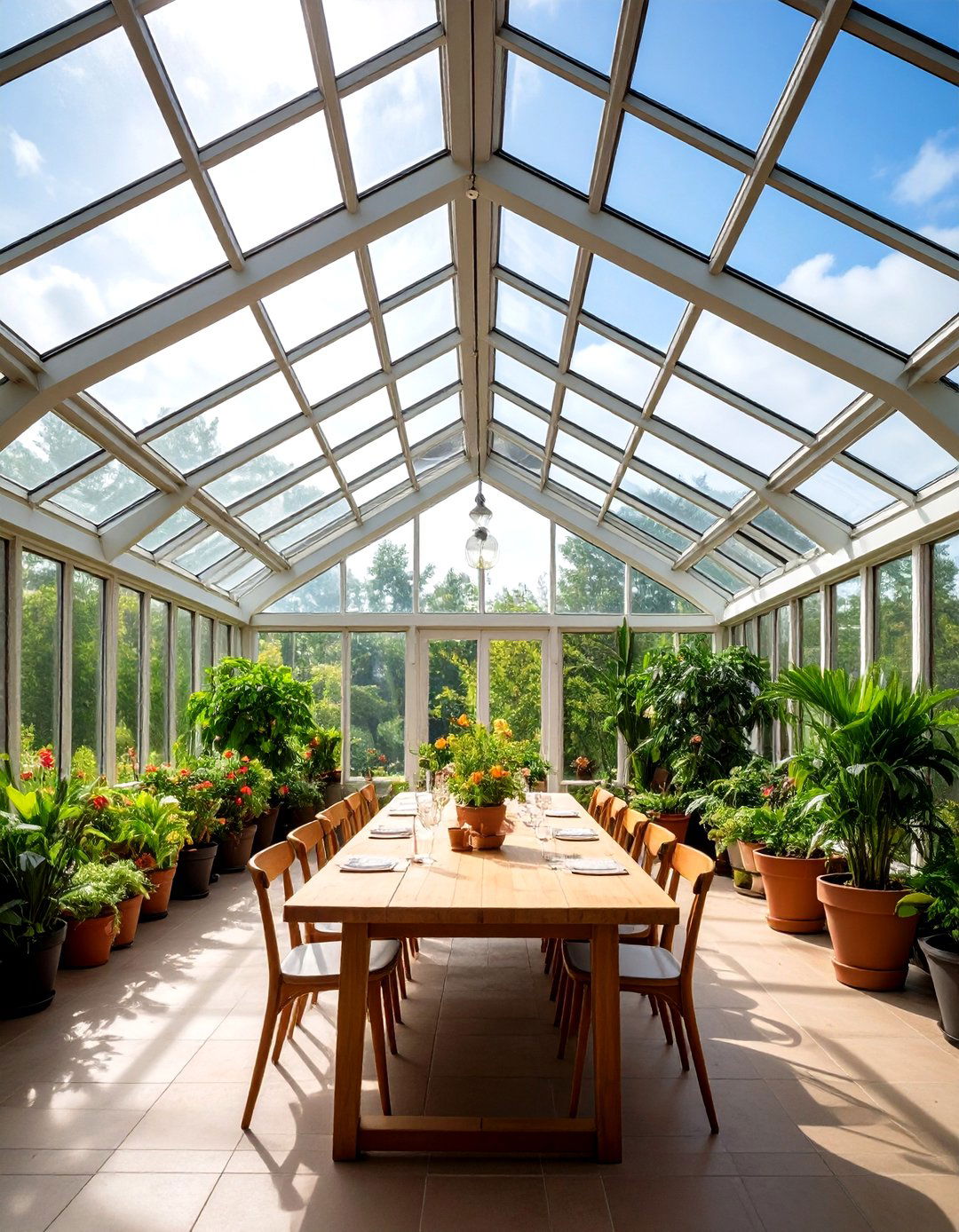
By installing a central skylight above your greenhouse dining retreat, you introduce a soft, even glow that enhances both plant growth and mealtime ambiance. According to design experts, skylights offer a cost-effective way to turn a garage or lean-to into a sunlit dining room, flooding the space with natural light without compromising structure. Choose operable skylights for added ventilation during warm seasons and pair them with automated shades to regulate light intensity. Position the skylight over the main dining table to highlight centerpiece arrangements while seating guests. This architectural adaptation transforms any dining room into a luminous glasshouse experience, connecting diners more closely with the sky and surrounding greenery.
3. Vertical Herb Wall in the Dining Room
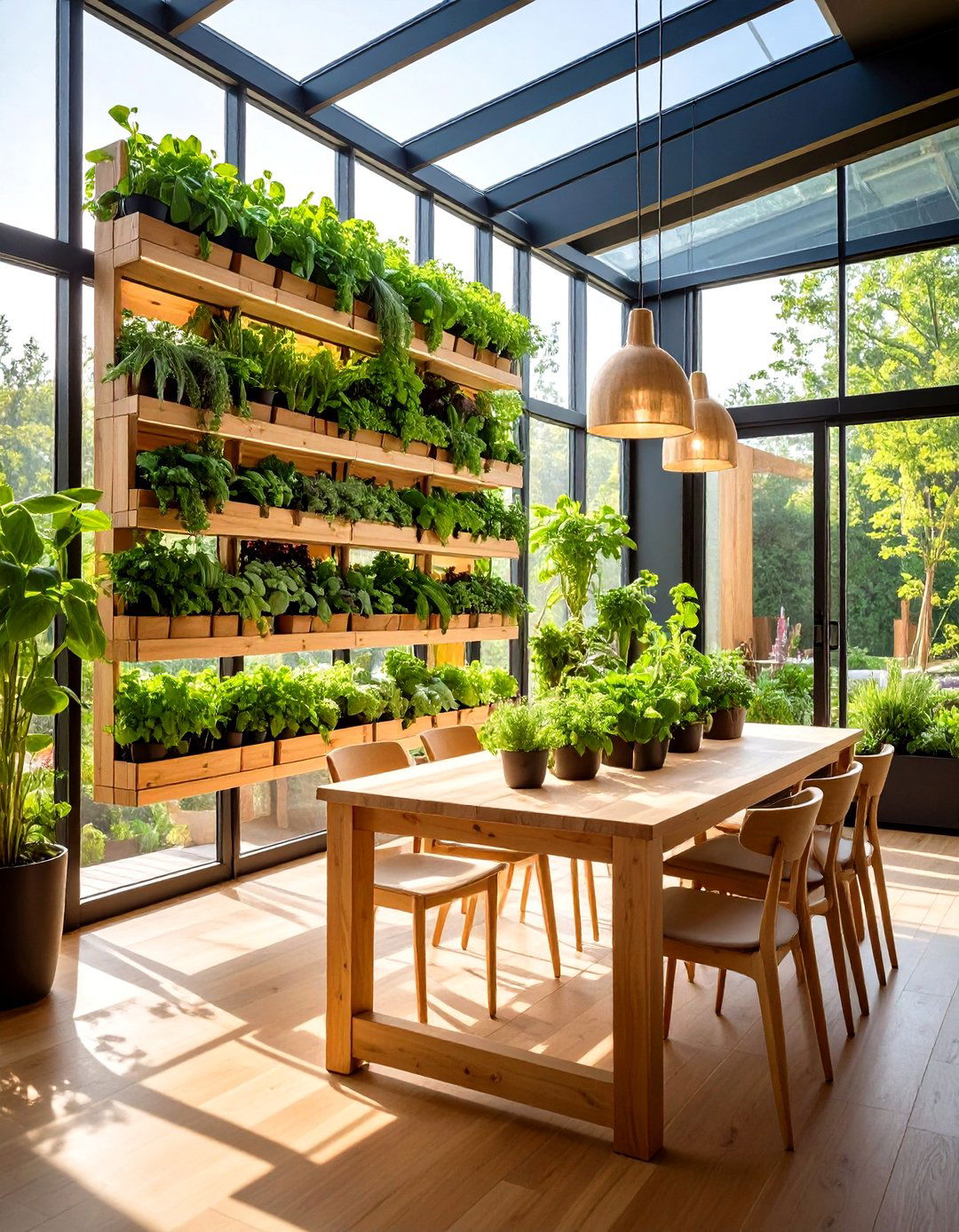
Consider a vertical herb wall to bring culinary freshness directly into your greenhouse dining room. By mounting tiered planters or pocket panels along one wall, you can cultivate basil, rosemary, thyme, and mint at arm’s reach, fostering an interactive farm-to-table environment. Ensure your herb wall receives adequate sunlight by facing it toward south- or west-facing panes, or supplement with discreet grow lights. Integrate a drip irrigation system concealed behind the panels to maintain consistent moisture without manual upkeep. Beyond functionality, the lush mosaic of foliage serves as living artwork, adding texture, color, and fragrant aroma to every meal in your dining room. This sustainable greenery feature elevates both aesthetics and flavor on the dining table.
4. Reclaimed Wood Table for Greenhouse Dining
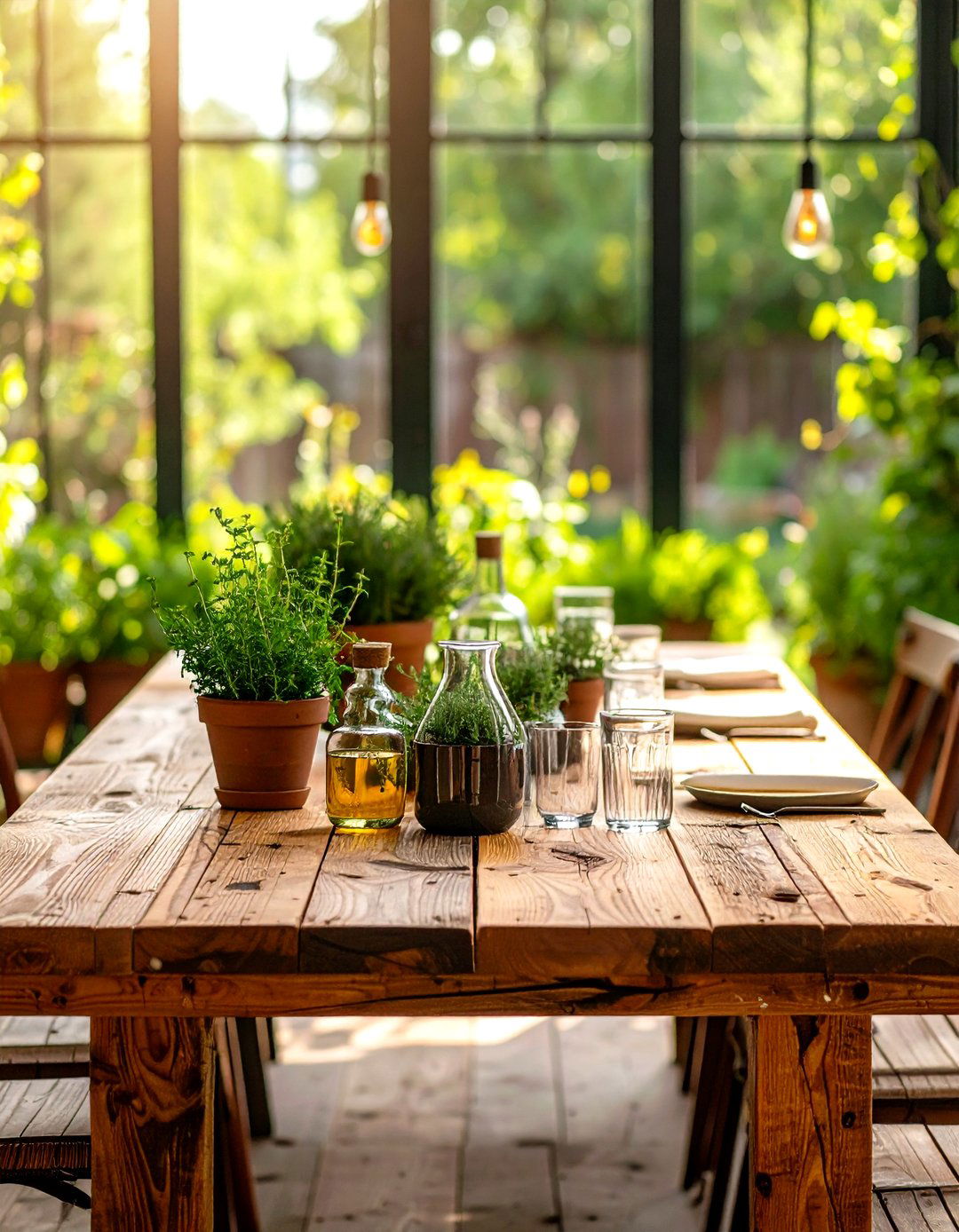
With a sustainable reclaimed wood table at the heart of your greenhouse dining room, you introduce warmth, character, and eco-conscious elegance all at once. Designers recommend sourcing second-hand farmhouse tables from thrift stores or salvage yards to minimize environmental impact and add a story-rich focal point to the space. Seal the tabletop with a clear, food-safe finish to protect against spills while preserving the wood’s natural knots and grains. Pair the rustic surface with modern glassware and botanical-themed linens to strike a balance between heritage and contemporary style. Position potted herbs or small succulents along the tabletop runner to create a living centerpiece that matures with the seasons.
5. Minimalist Metal Greenhouse Frame
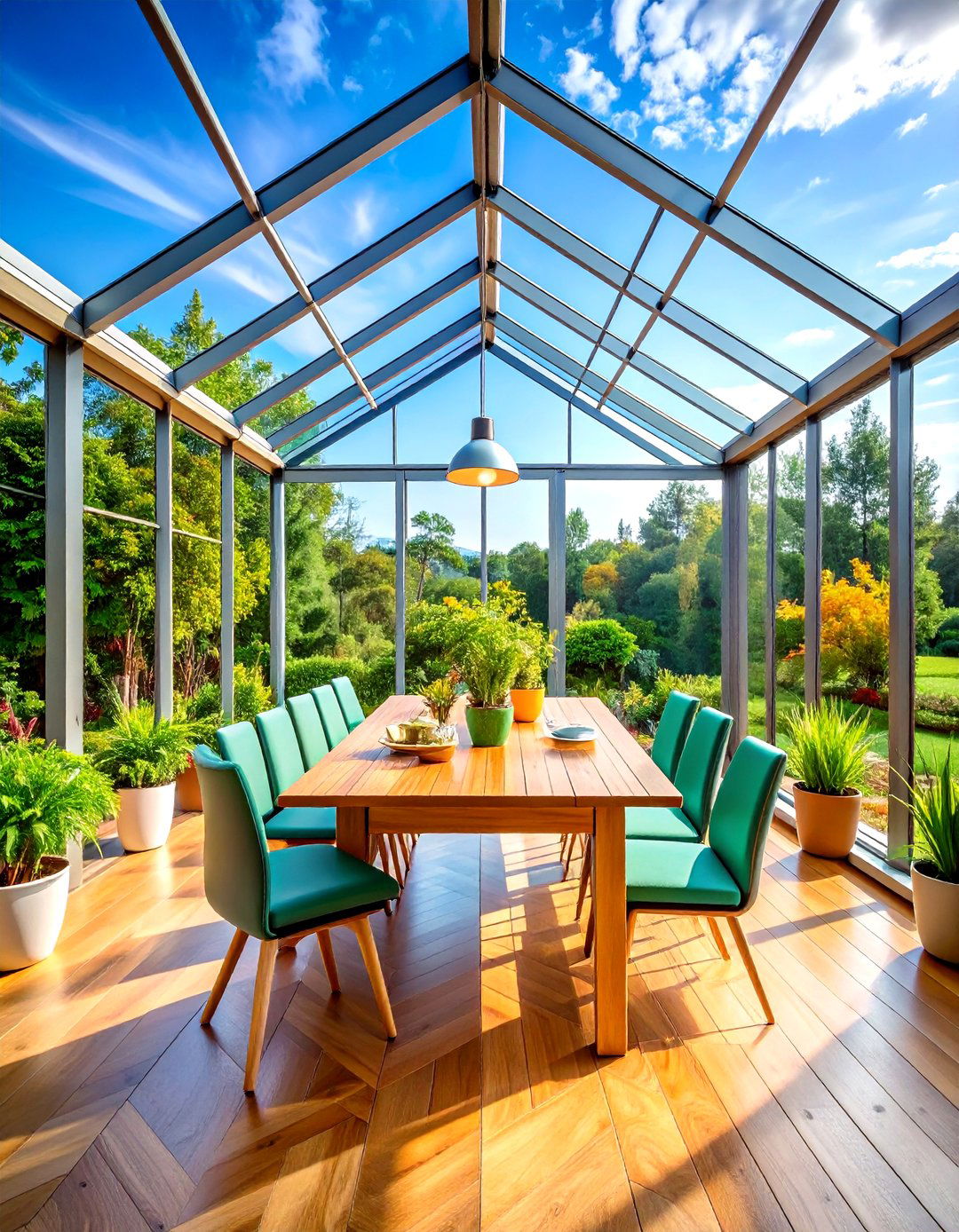
An industrial-inspired minimalist greenhouse frame sets the stage for a sleek, contemporary dining room that emphasizes structure and simplicity. Drawing on modern minimalist greenhouse designs, this style features straight lines, aluminum or steel profiles, and polycarbonate or tempered glass panels that allow uninterrupted sightlines. The cool metal frame contrasts elegantly with lush greenery and warm wooden furnishings, creating visual dynamism. To integrate seamlessly with your home, opt for matte-black or powder-coated frames that harmonize with interior metals. Flooring choices like polished concrete or stone pavers enhance the industrial feel while remaining durable in humid environments. This stripped-back approach highlights the dining room’s botanical elements, turning the greenhouse into a refined culinary backdrop.
6. Hanging Planter Chandelier Over Dining Table
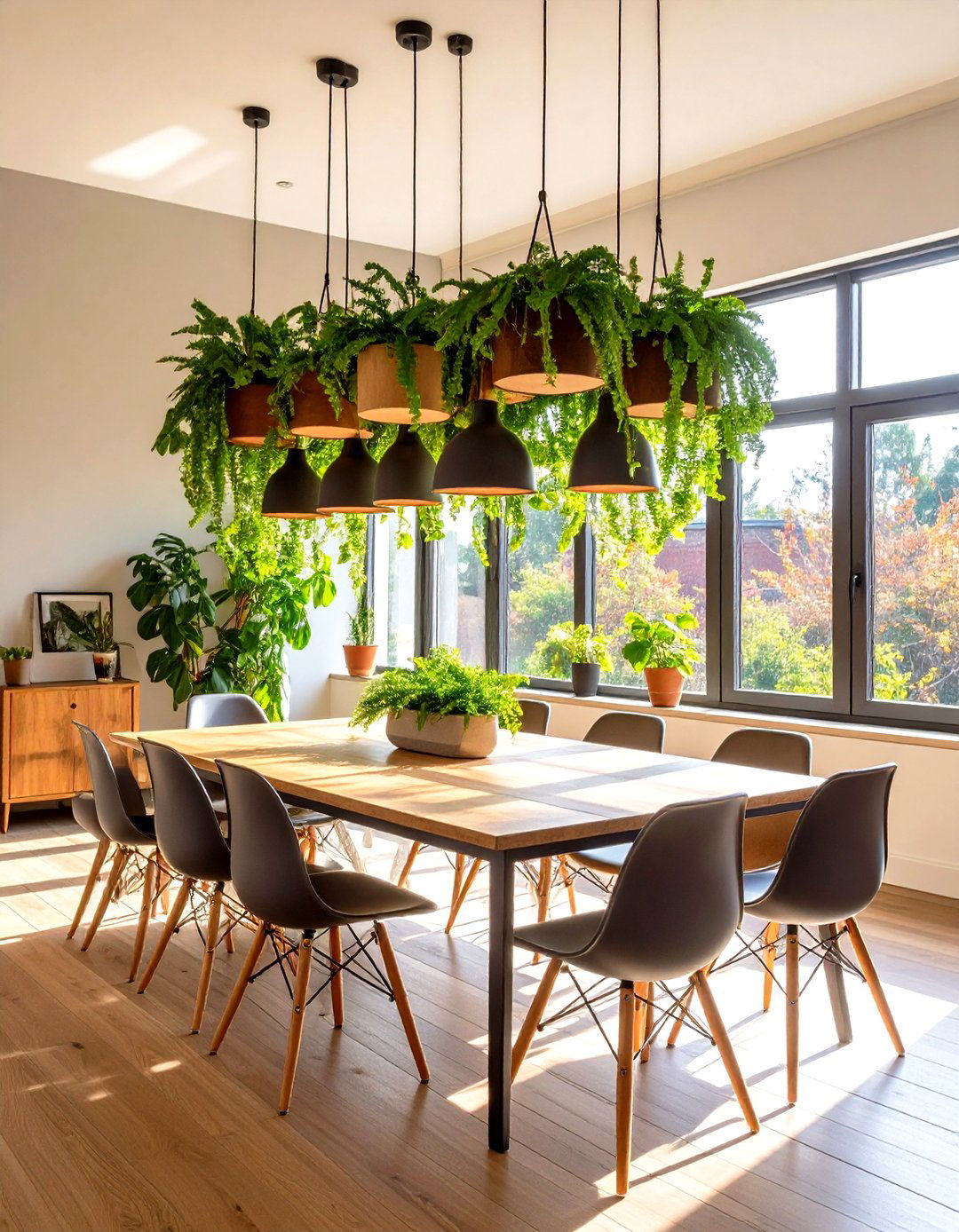
For an overhead display that captivates, install a hanging planter chandelier above your greenhouse dining table to merge lighting and greenery. Inspired by designers who encourage transforming light fixtures into plant showcases, this hybrid installation suspends potted ferns, ivy, or philodendron varieties from a circular or linear frame while integrating pendant lights within the same structure. Use lightweight, moisture-resistant planters and low-voltage LED bulbs to ensure safety and longevity. Position the chandelier centrally to cast soft foliage shadows across the table, adding drama to evening meals. The result is a living sculptural focal point that reinforces the garden-inspired dining room’s immersive, atmospheric charm.
7. Living Vine Accent Wall in the Greenhouse

Looking to maximize greenery and texture, create a living vine accent wall in your greenhouse dining room by training grapevines or climbing philodendrons across an interior frame. Inspired by rustic glass retreats where century-old grapevines snake through slanted glass panels, this approach weaves organic movement into your dining backdrop. Install sturdy wire trellises or tension cables at regular intervals and guide young shoots horizontally before allowing them to cascade. As the vines mature, prune selectively to maintain airflow and prevent overgrowth. By situating the vine wall behind the head of the table, you ensure a verdant focal point that evolves with the seasons, adding a living tapestry to your greenhouse dining room.
8. Plant Nursery–Inspired Display in the Dining Room
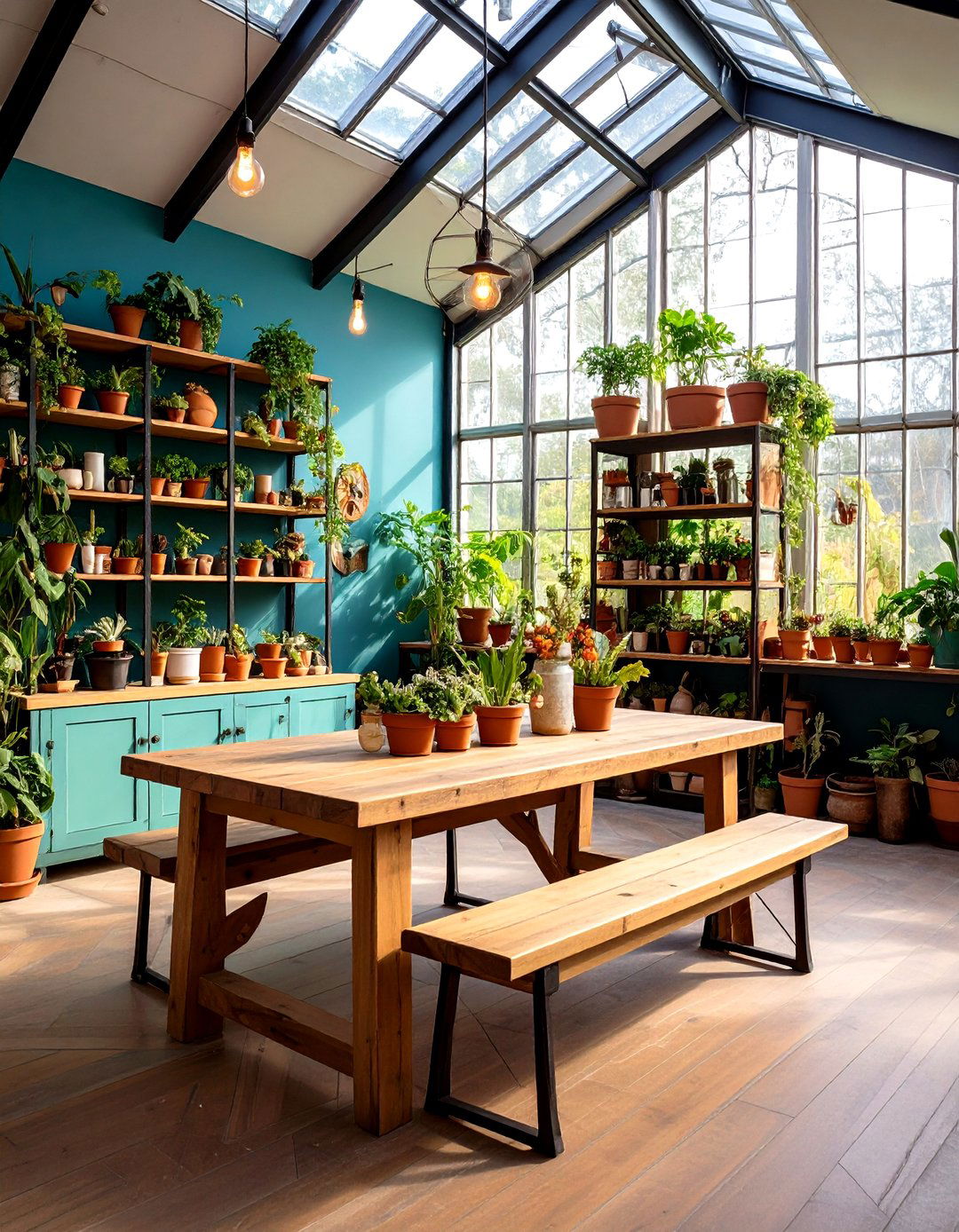
Also known as the “Copy a Plant Nursery” concept, transform one wall of your greenhouse dining room into a plant nursery–inspired display by incorporating industrial-style shelving and decorative stone accents. Designers advise visiting local nurseries to note small-scale displays—like terracotta pots, rustic benches, and string lights—that can be replicated at home. Select a mix of sculptural plants such as variegated ferns, fiddle-leaf figs, and trailing pothos to curate a layered, boutique feel. Utilize reclaimed wood or powder-coated metal shelves to maintain structural integrity in humid greenhouse conditions. This approach not only organizes your greenery but also immerses guests in a charming garden-shop ambiance inside your dining room.
9. Mix-and-Match Seating in the Greenhouse Dining Room
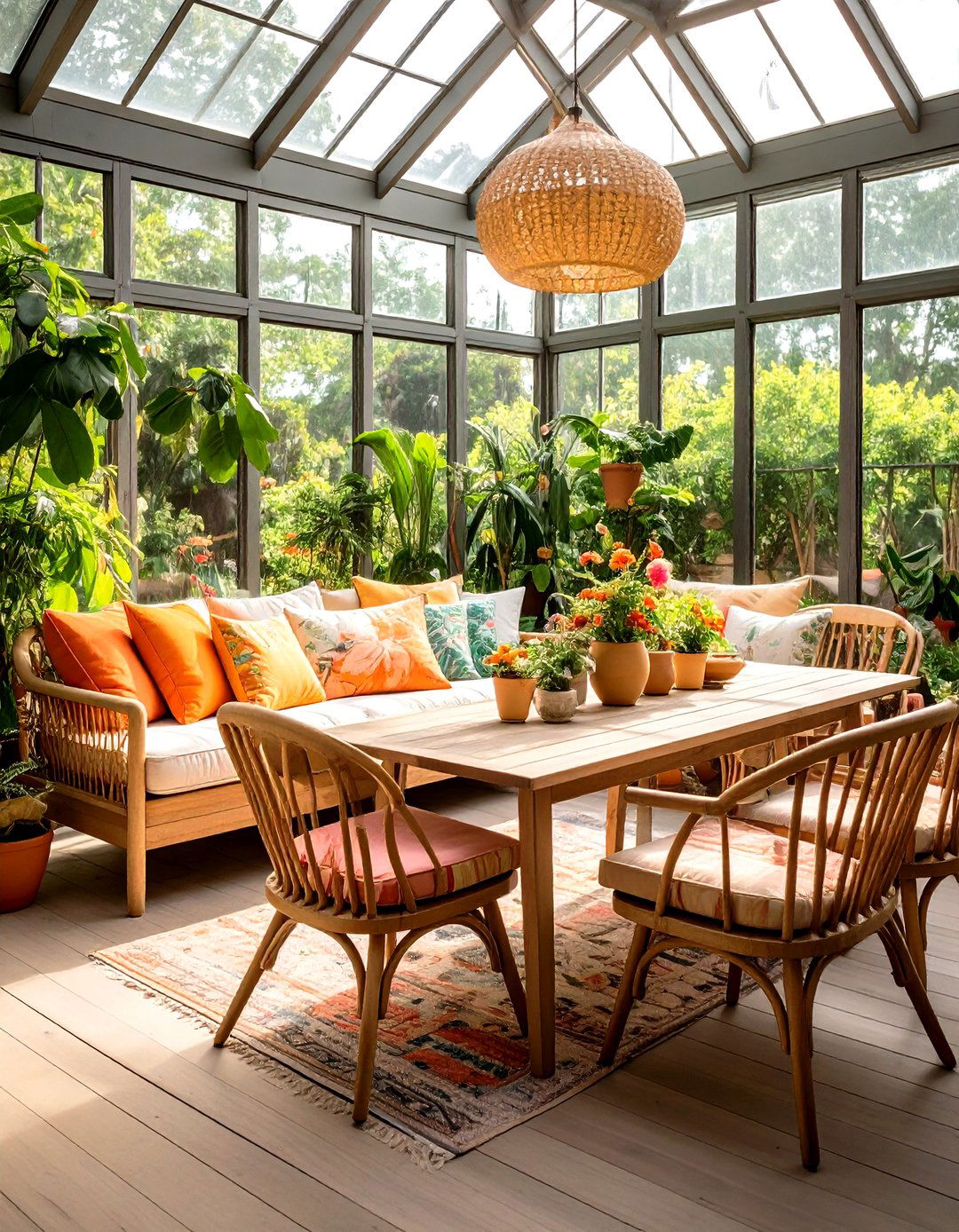
Another inviting way to personalize your greenhouse dining room is to adopt a mix-and-match seating arrangement, combining chairs, benches, and loveseats around your dining table. As suggested in greenhouse dining concepts, layering a variety of seating styles—such as a modern bench on one side, two vintage dining chairs on another, and a cushioned loveseat at the head—brings eclectic charm and flexible functionality to the space. Select moisture-resistant materials like powder-coated metal, treated wood, and all-weather fabrics to withstand greenhouse humidity. Incorporate seat cushions in botanical prints or natural linens for added comfort and cohesion with the surrounding plants. This approach not only accommodates different group sizes but also tells a unique design story at every gathering.
10. Built-In Bench Seating in Greenhouse Dining Room
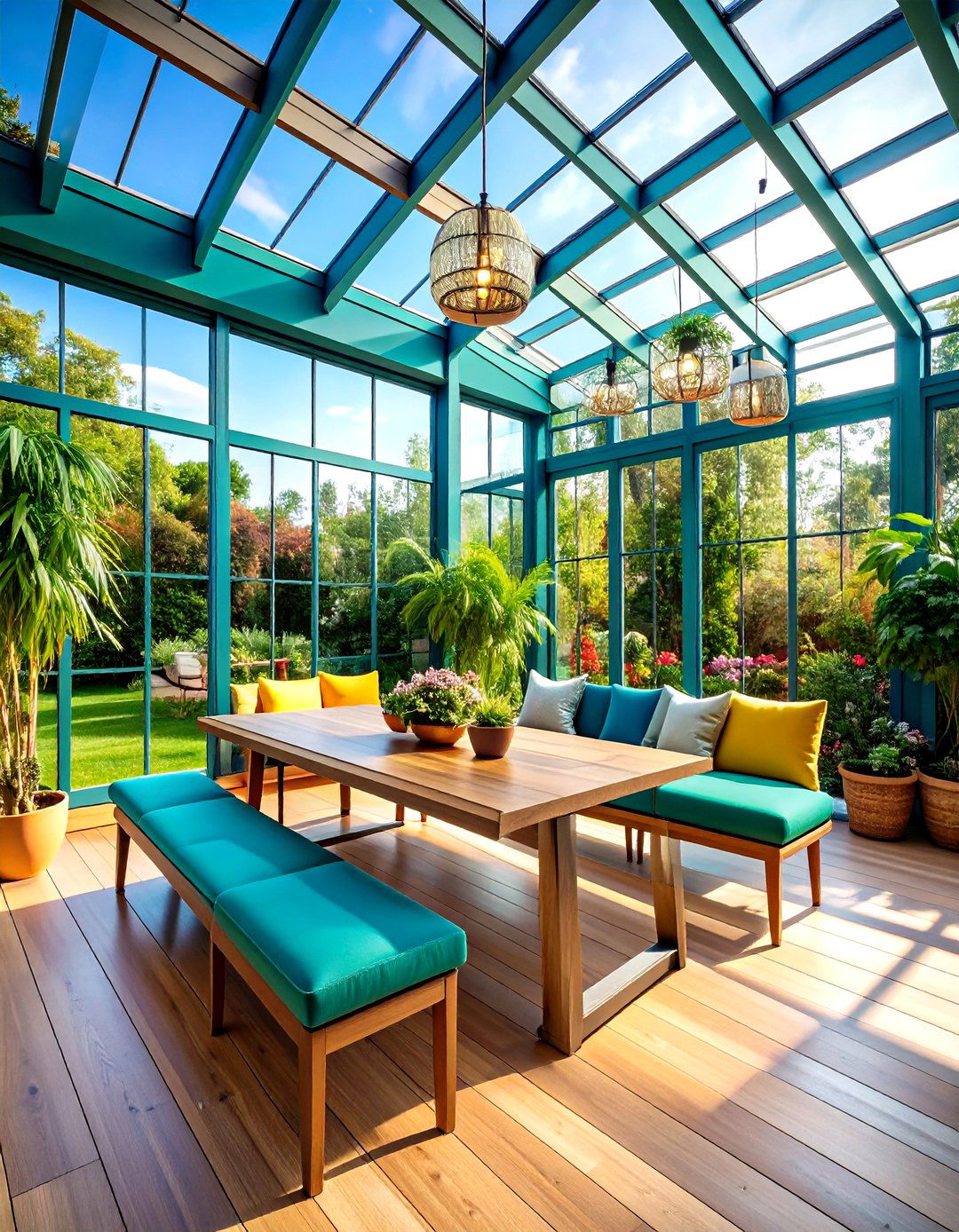
For cozy communal mealtime, integrate built-in garden bench seating along one side of your greenhouse dining room, anchoring the table against a verdant backdrop. According to greenhouse room designs, positioning a cushioned bench beneath floor-to-ceiling glass walls maximizes views and optimizes floor space, allowing more guests to gather at the table. Choose weatherproof upholstery in botanical or neutral hues to ensure durability and easy cleaning. Complement the bench with lightweight, movable chairs on the opposite side for flexible layouts. Accentuate the built-in seating with decorative throw pillows and small potted plants along the bench ledge to soften lines and maintain the garden-inspired atmosphere.
11. Wicker and Rattan Seating Ensemble in the Dining Room

A wicker and rattan seating ensemble adds textural warmth and organic appeal to your greenhouse dining room, perfect for family-style gatherings. Drawing inspiration from elegant greenhouse setups, this combination of woven materials offers natural resilience to changes in humidity while blending seamlessly with plant life. Opt for chairs with curved backs and loose cushions in water-resistant fabrics to balance comfort and practicality. Introduce a mix of tan and off-white woven pieces to create subtle contrast, then anchor the arrangement with a low-profile rattan side table for serving platters. This approach softens the greenhouse’s structural transparency, fostering a cozy dining environment that feels both refined and relaxed.
12. Heated Floor and Hearth Feature in Greenhouse Dining Room

By installing a heated floor system and a cozy hearth, you can extend the usability of your greenhouse dining room into cooler seasons without compromising style. Experts recommend radiant heating beneath tile or stone floors to evenly distribute warmth, preserving humidity levels ideal for plant health. Complement this underfoot comfort with a compact wood-burning stove or electric fireplace that anchors one corner of the dining room, providing a visual focal point and supplemental heat. Surround the hearth with heat-resistant planters and slate hearth pads to protect indoor greenery. Together, these features ensure your greenhouse dining room remains a year-round destination for memorable meals in comfort.
13. Statement Pendant Lighting in the Dining Room
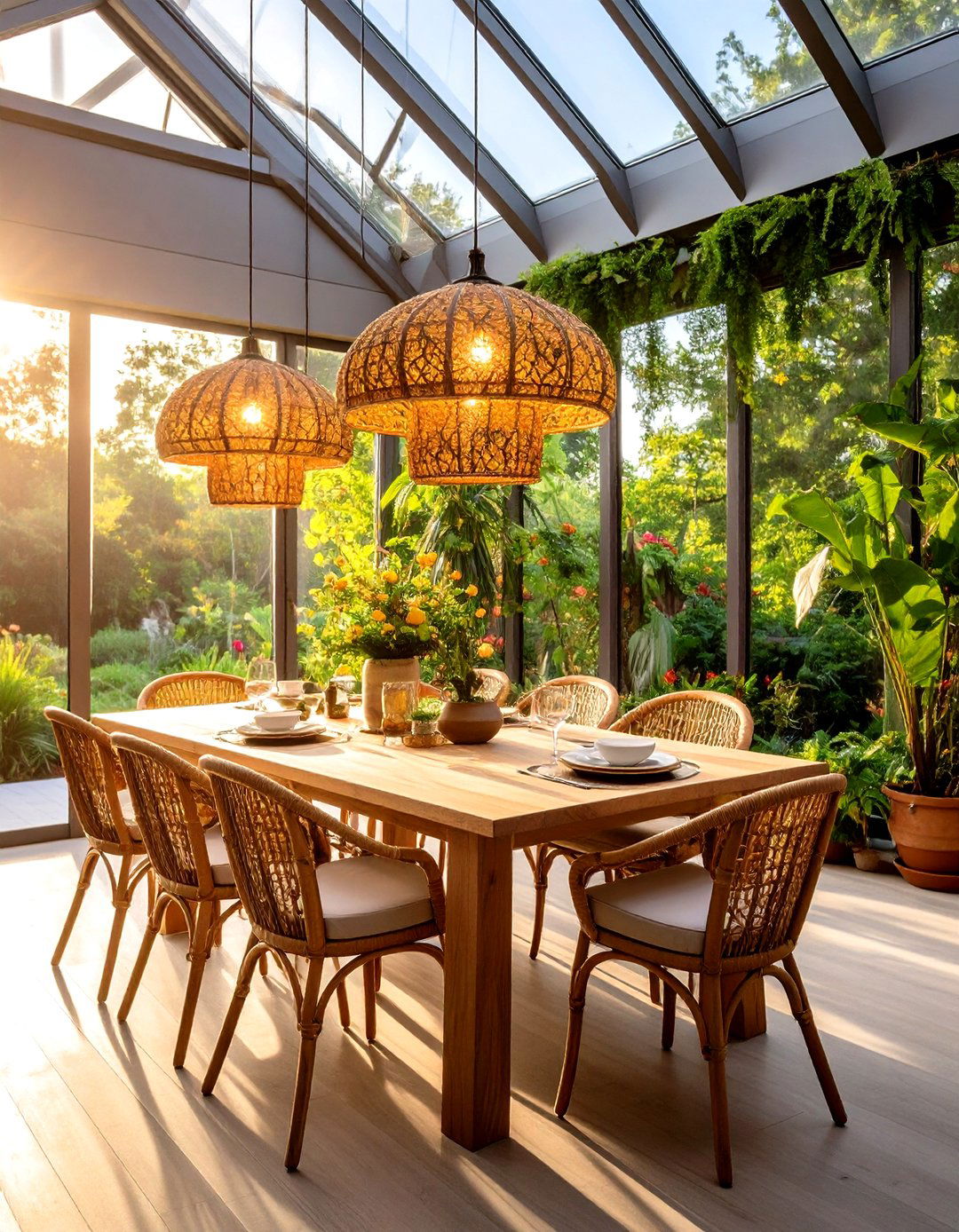
One way to illuminate your greenhouse dining room with flair is through statement pendant lighting, blending form and function above the table. Designers often choose oversized pendants in natural materials like woven rattan, brass, or matte metal to echo the greenhouse’s botanical theme. Position multiple pendants at staggered heights or cluster them over a long table for dramatic effect. Ensure fixtures have damp-rated finishes to withstand humidity, and pair bulbs with warm color temperatures (around 2700K) for a cozy glow. Integrate dimmable switches or smart controls to adjust the mood from bright daytime meals to intimate evening gatherings in your dining room.
14. Botanical Art Gallery in the Greenhouse Dining Room
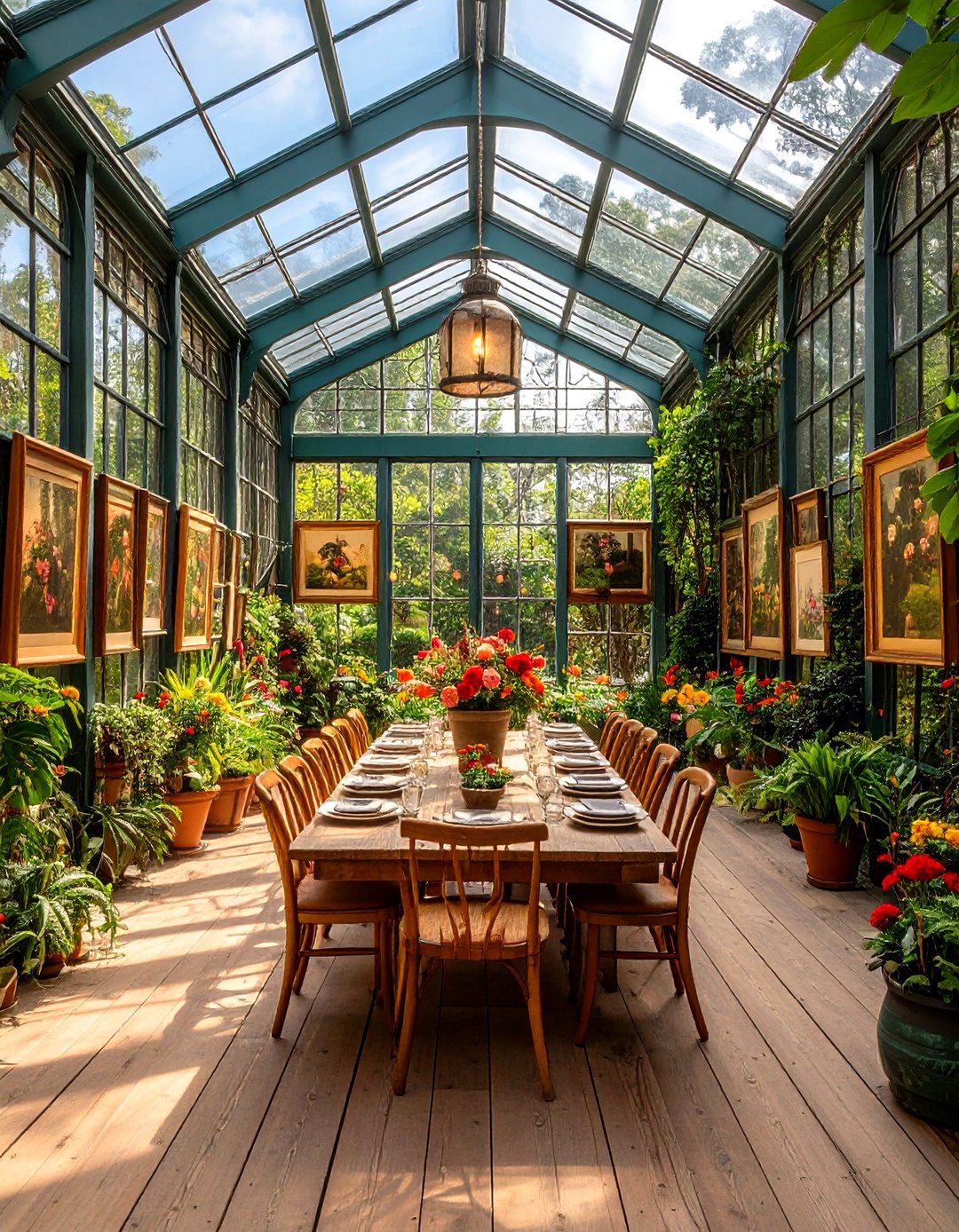
Additionally, curate a botanical art gallery within your greenhouse dining room to heighten its garden-inspired narrative. By sourcing vintage botanical prints or original nature-themed artwork, you can adorn sheltered walls in period frames to echo greenhouse architectural lines. Arrange the pieces in a symmetrical grid or salon-style cluster above a sideboard or bench seating. Use UV-resistant glass or acrylic glazing to protect each print from sunlight. For cohesive appeal, select frames in complementary finishes—natural wood, distressed white, or matte black—mirroring furniture accents. This elevated gallery adds sophistication while reinforcing the dining room’s living tapestry of plants and foliage.
15. Monochrome Green Palette in the Dining Room
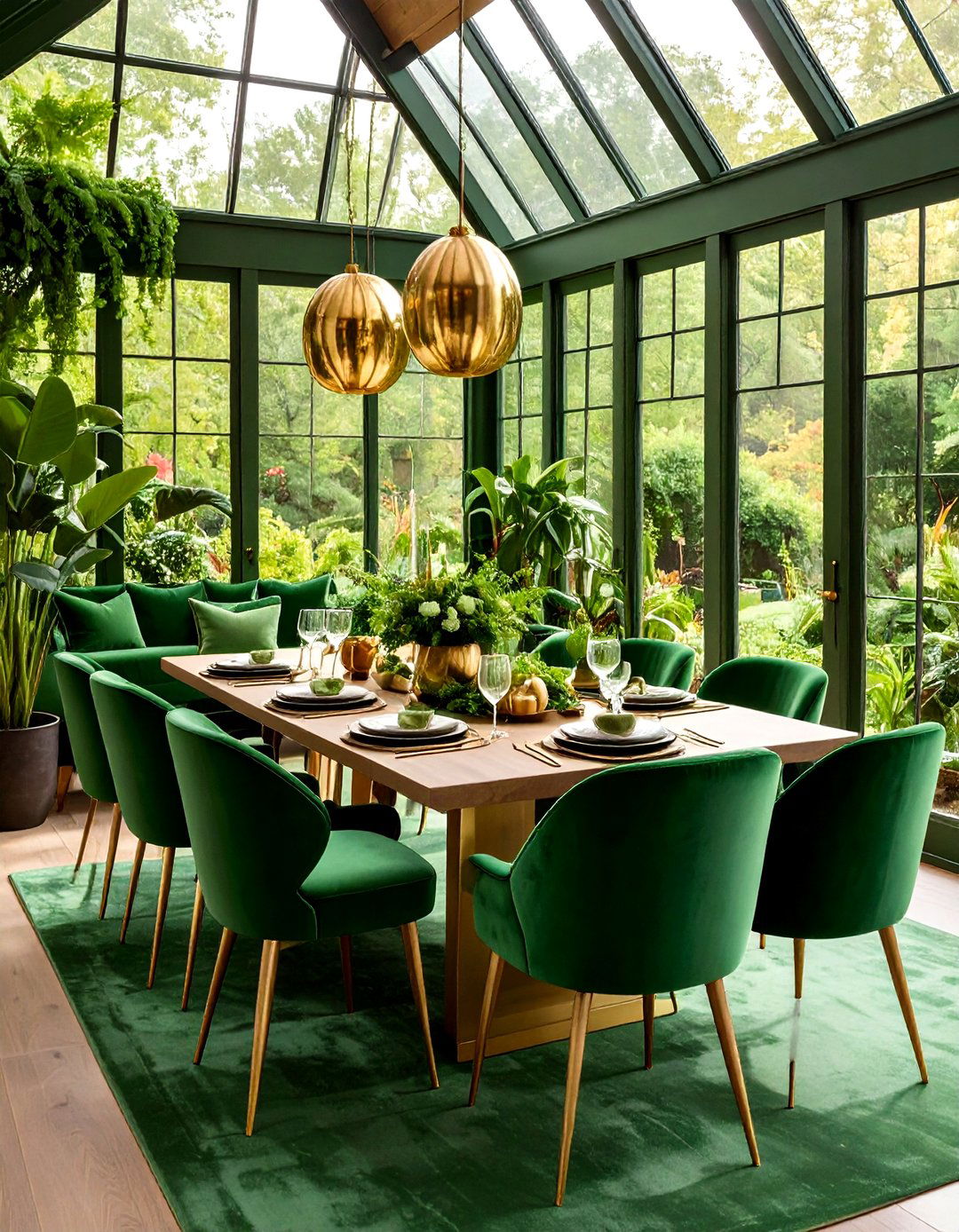
These days, embracing a monochrome green palette elevates your greenhouse dining room into a serene botanical retreat. Interior experts highlight earth tones—particularly shades of green—to create a cohesive yet layered aesthetic that complements living plants. Select paint, textiles, and dinnerware in olive, sage, and forest greens, then layer with varying textures—matte ceramic bowls, velvet chair cushions, and woven placemats—to avoid visual flatness. Metallic accents in brass or copper provide subtle contrast and warmth. When anchored by a neutral backdrop like white or pale gray walls, the green-on-green scheme immerses diners in a lush environment, blurring boundaries between built and natural spaces.
16. Bold Color Accents in the Greenhouse Dining Room
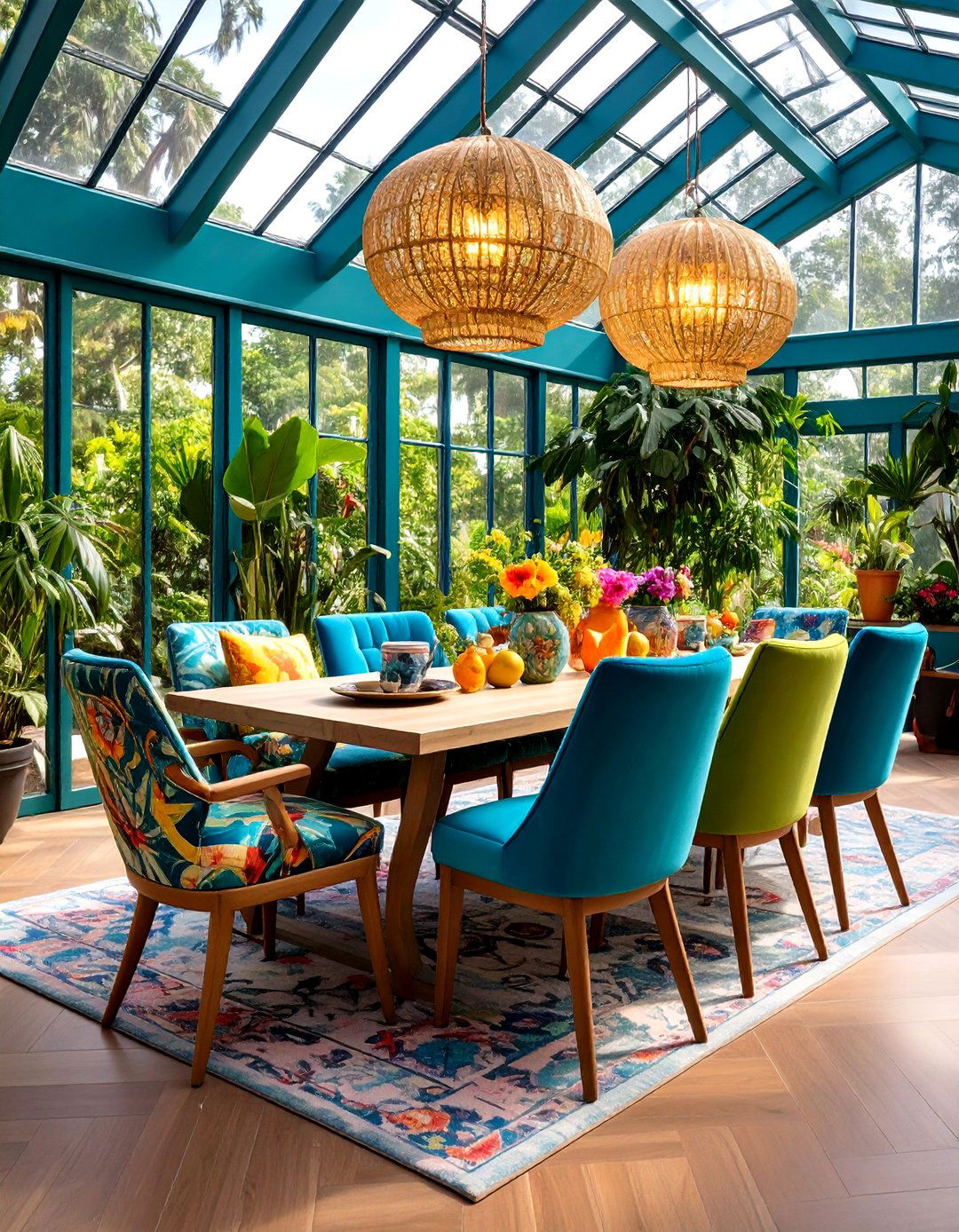
Despite the dominance of greenery, introducing bold color accents can add energy and personality to your greenhouse dining room. Trend forecasts suggest popping vibrant jewel tones—emerald, sapphire, or deep coral—through statement chairs, patterned cushions, or accent dishes to enliven the foliage backdrop. Consider swapping out one or two dining chairs in a rich hue or selecting a colorful area rug to ground the table. Small decorative objects like vases or candlesticks in complementary shades reinforce the palette without overpowering the natural setting. This selective use of bright color creates visual interest and highlights key elements within the greenhouse dining room.
17. French or Sliding Doors for Seamless Dining Transition
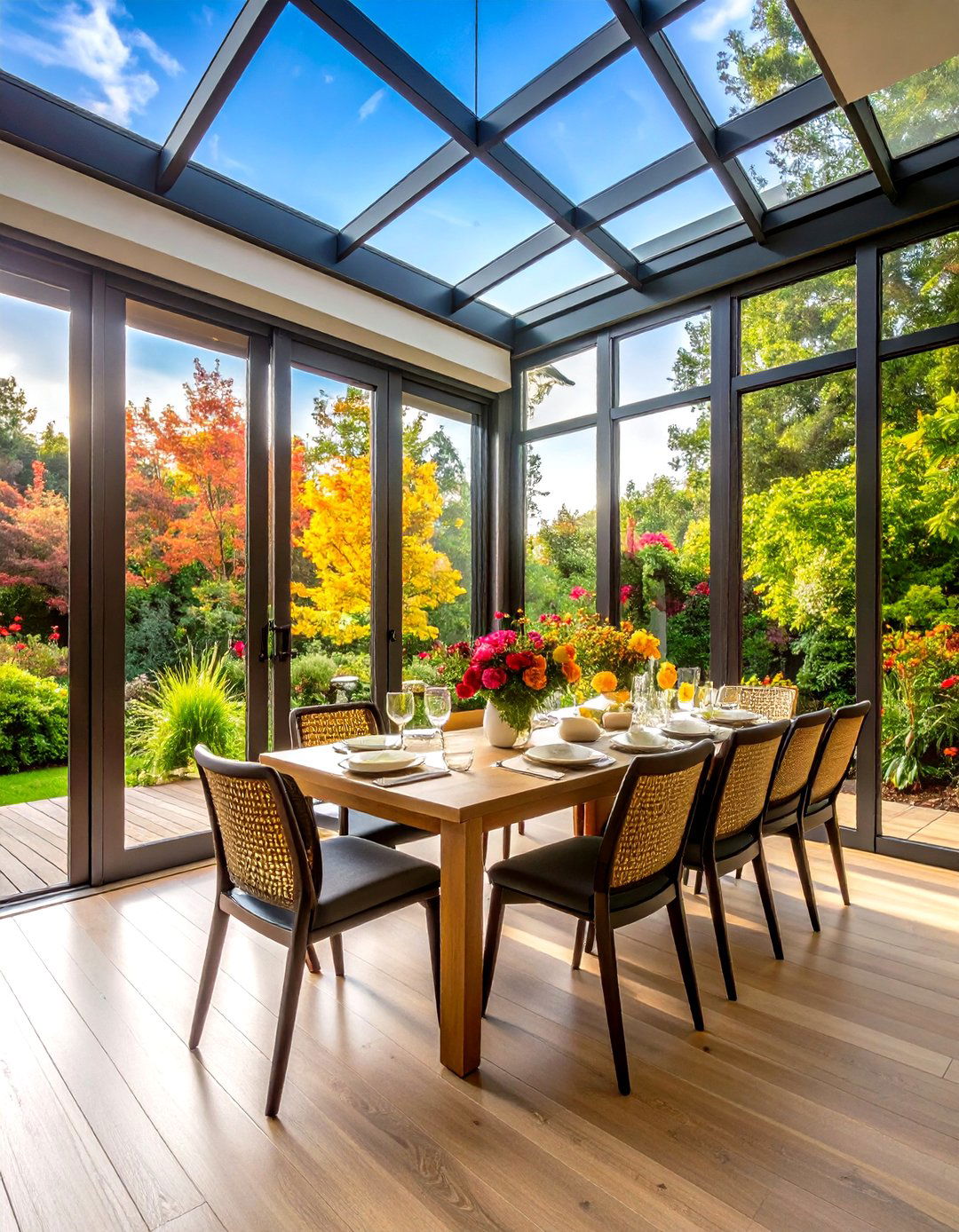
These versatile greenhouse dining rooms benefit from the addition of French or sliding glass doors, creating a seamless indoor-outdoor flow that expands entertaining possibilities. According to alfresco greenhouse designs, retractable or bi-fold doors let fresh air and sunlight spill into the dining space, blurring boundaries between garden and interior. Choose full-height glass panels to maximize views and consider slimline aluminum frames for a modern aesthetic. Automated options with built-in insect screens enhance comfort, while low-threshold tracks ensure accessibility. By linking the greenhouse dining room to an adjacent patio or lawn, you open your meals to fresh breezes and open vistas, perfect for casual brunches or al fresco dinners.
18. Washable Rugs for Greenhouse Dining Room
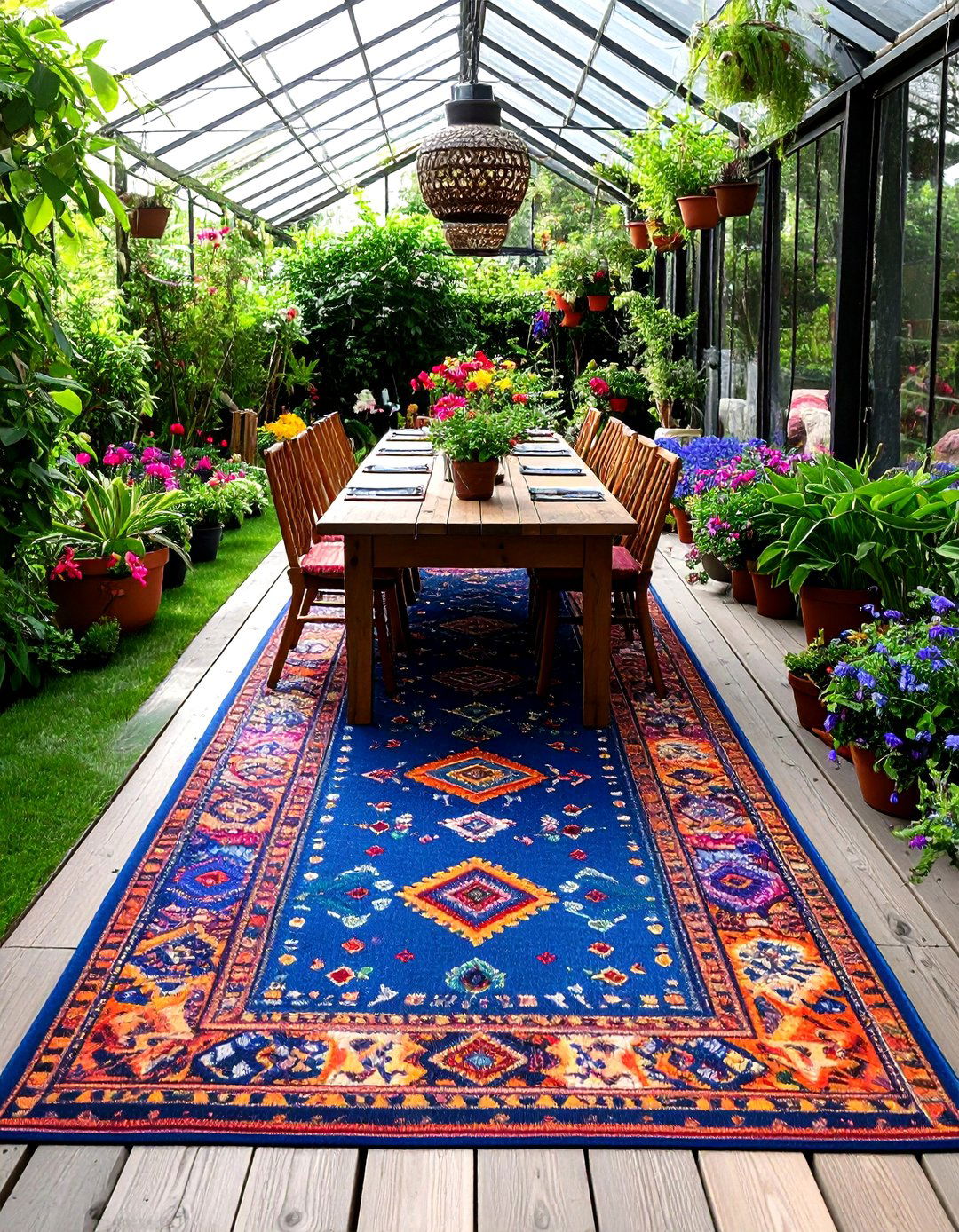
Although unconventional, layering washable and outdoor-rated rugs beneath your dining table can instantly soften the greenhouse floor while resisting mud and spills. House Beautiful experts note that washable rugs bring pattern and warmth to glasshouse floors without sacrificing practicality, as they can be laundered to remove soil and moisture. Choose materials like polypropylene or recycled textile blends with non-slip backing suited to humidity. Opt for runner-style or boho-inspired patterns to anchor the table and define the dining zone. The rugs’ quick-dry properties and durability make them an ideal choice for year-round greenhouse dining, ensuring a cozy underfoot experience that’s easy to maintain.
19. Set a Stylish Table in the Greenhouse Dining Room

For memorable dinner parties in your greenhouse dining room, set a stylish table that complements the botanical setting by layering natural textures and seasonal centerpieces. House Beautiful emphasizes the romance of dining under glass, suggesting a mix of vintage linens, artisanal ceramics, and candlelit lanterns. Arrange potted succulents or low-profile greenery along the table’s center, interspersed with brass candlesticks for height variation. Select mismatched dinnerware in complementary hues—soft greens, creams, and terracotta—to echo the surrounding plants. This curated tablescape enhances the greenhouse atmosphere, making every meal feel like a special, immersive garden experience.
20. Seasonal Centerpiece Rotation in the Dining Room
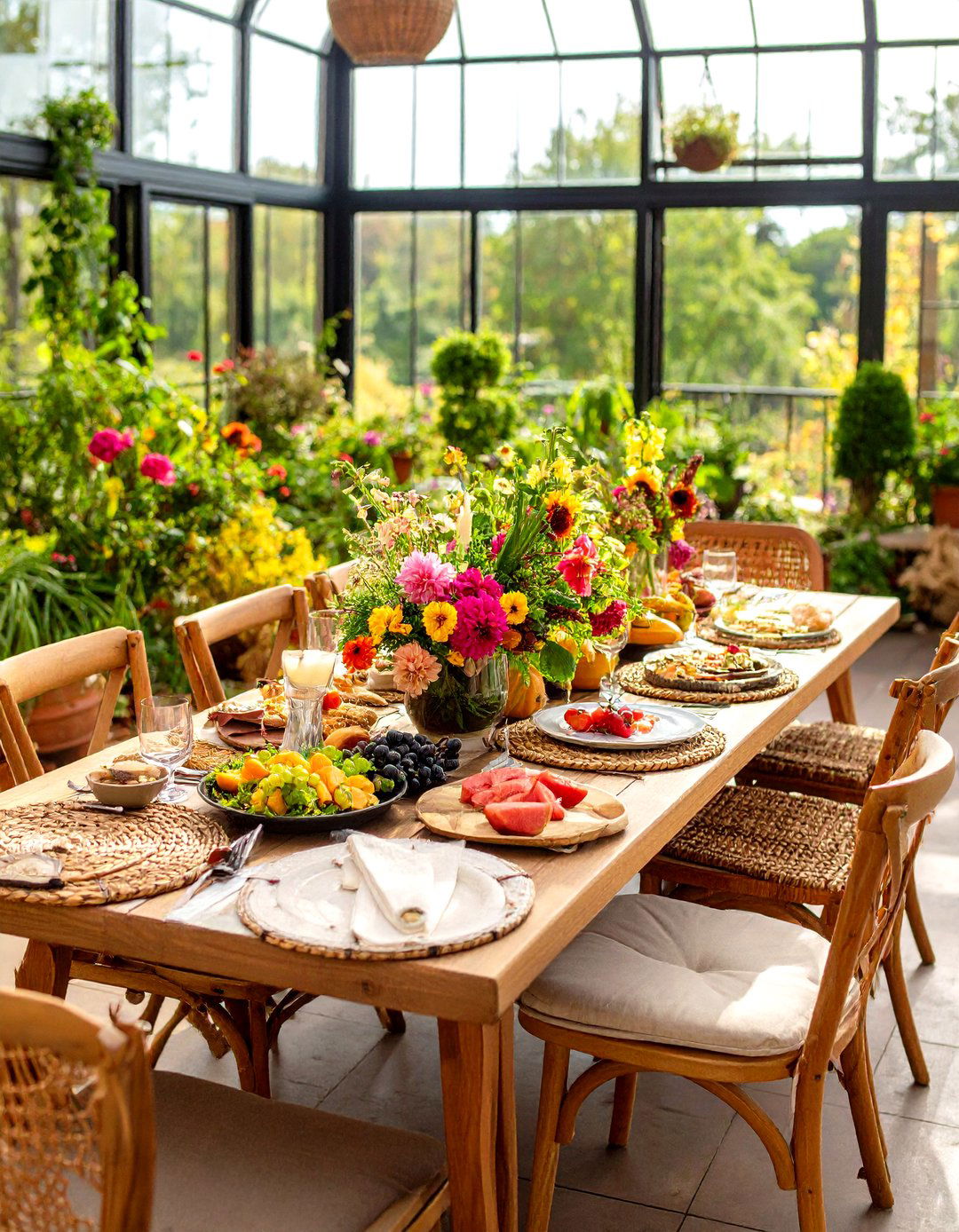
To keep your greenhouse dining room fresh and engaging, adopt a seasonal centerpiece rotation using ingredients and blooms harvested from your greenhouse itself. Homes & Gardens editors recommend starting with a theme—warm citrus and wildflowers for summer, dried grasses and gourds for autumn—to reflect the changing year. Position the centerpiece on a woven tray or shallow wooden bowl for easy swaps between seasons. For winter, cluster candles with sprigs of evergreens; come spring, fill vases with budding branches and fresh herbs. This dynamic approach not only celebrates your greenhouse’s productivity but also ensures that each dining experience feels connected to the cycles of nature.
Conclusion:
As you explore these greenhouse dining room ideas, you’ll discover how glass structures, abundant greenery, and thoughtful furnishings can transform a simple room into an immersive garden dining destination. Whether you lean into minimalist metal frames or embrace rustic wood and woven textures, each concept underscores the magic of merging indoor comfort with outdoor vitality. From skylights to heated floors, vertical herb walls to seasonal centerpieces, these strategies ensure your greenhouse dining room remains inviting and functional in any season. Embrace your creativity, refine these ideas to suit your space, and let your greenhouse dining room become a living canvas for memorable gatherings.


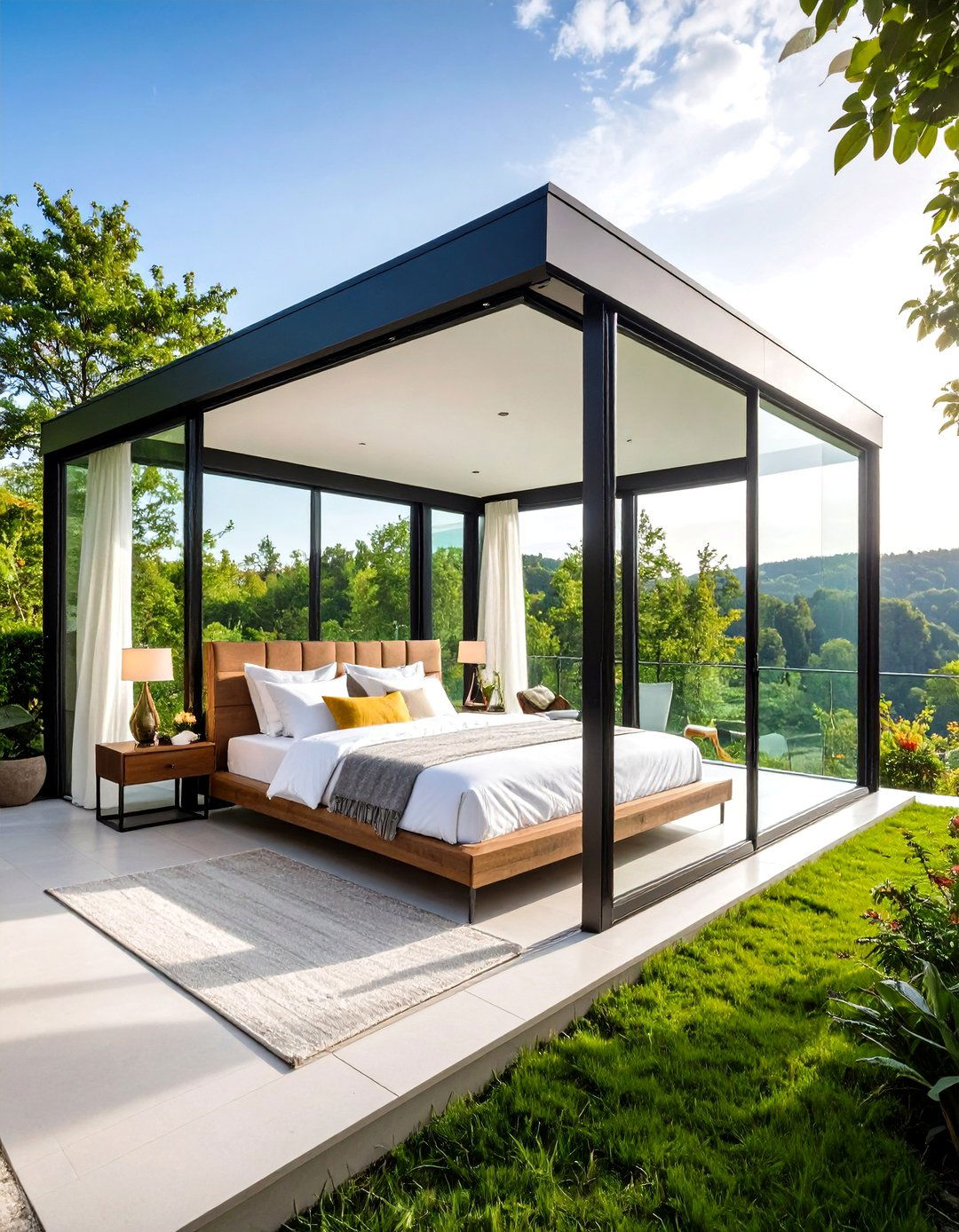
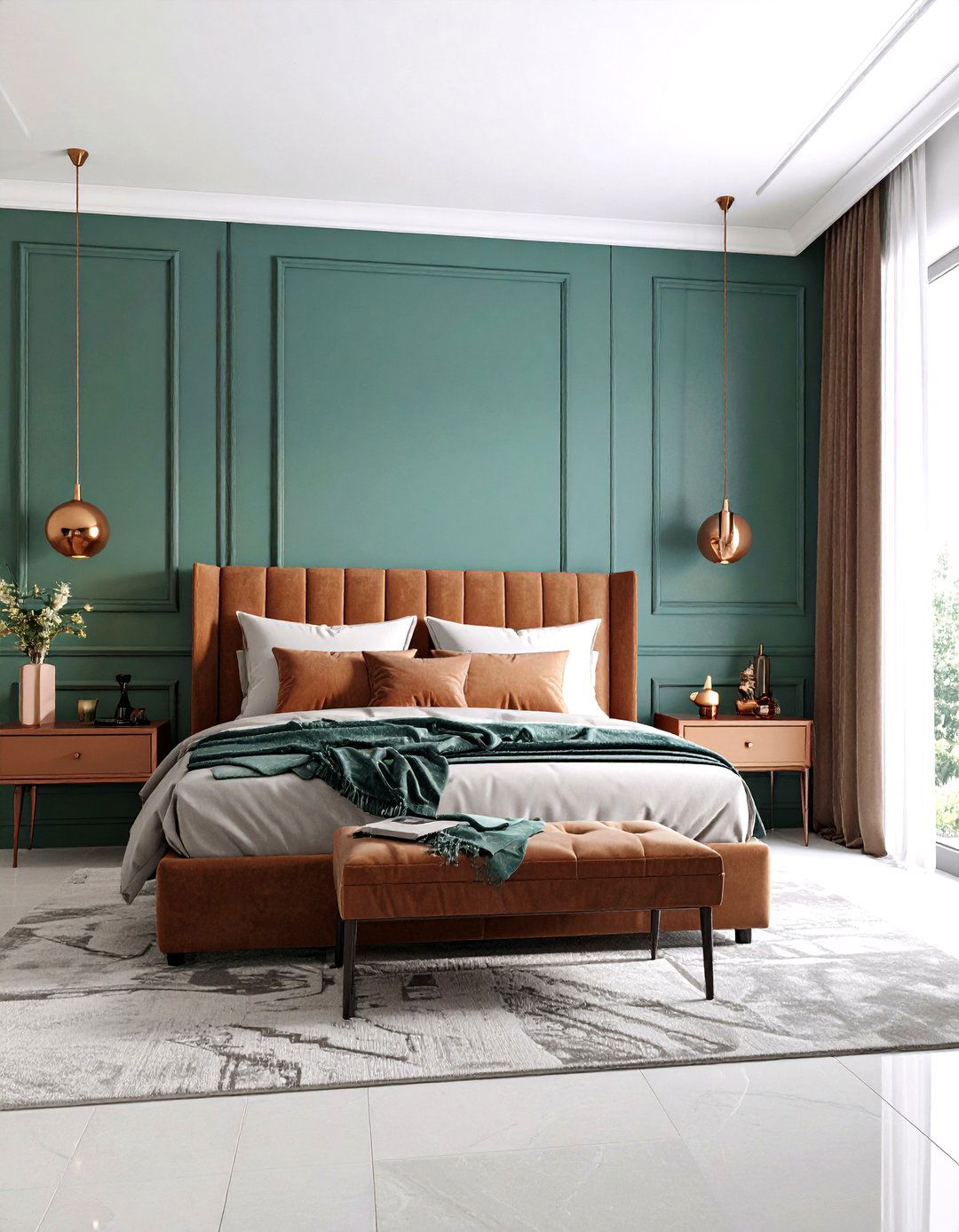

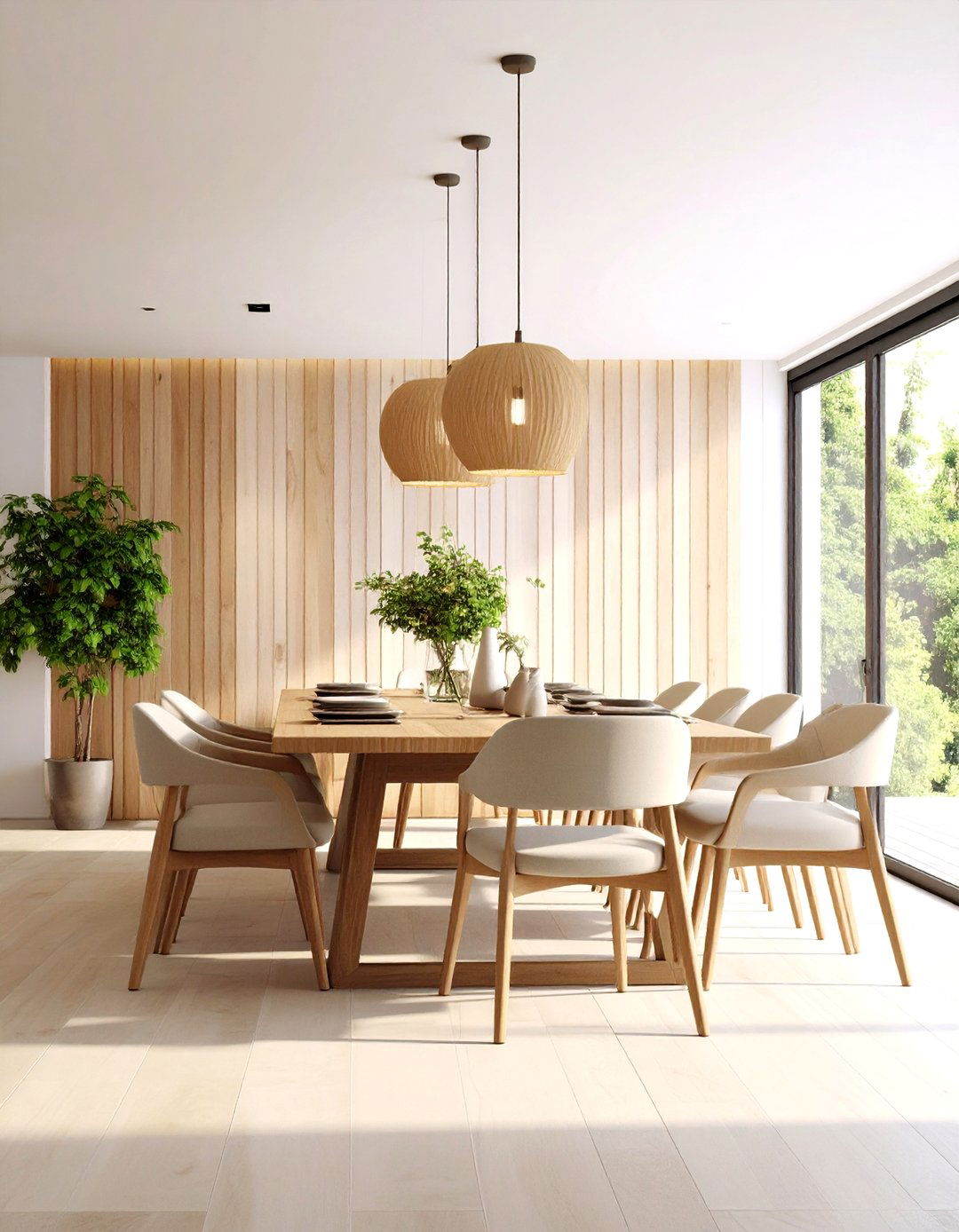

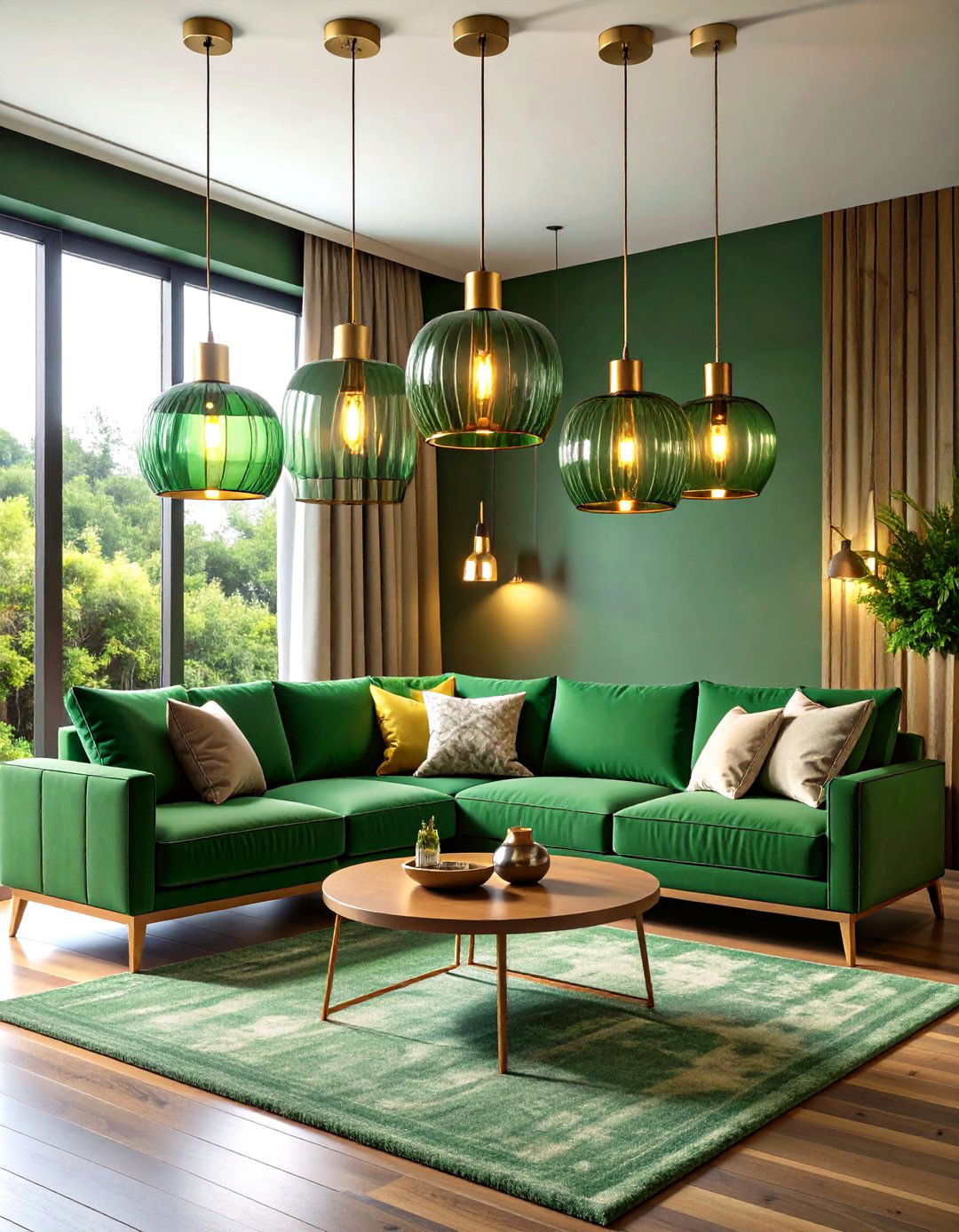

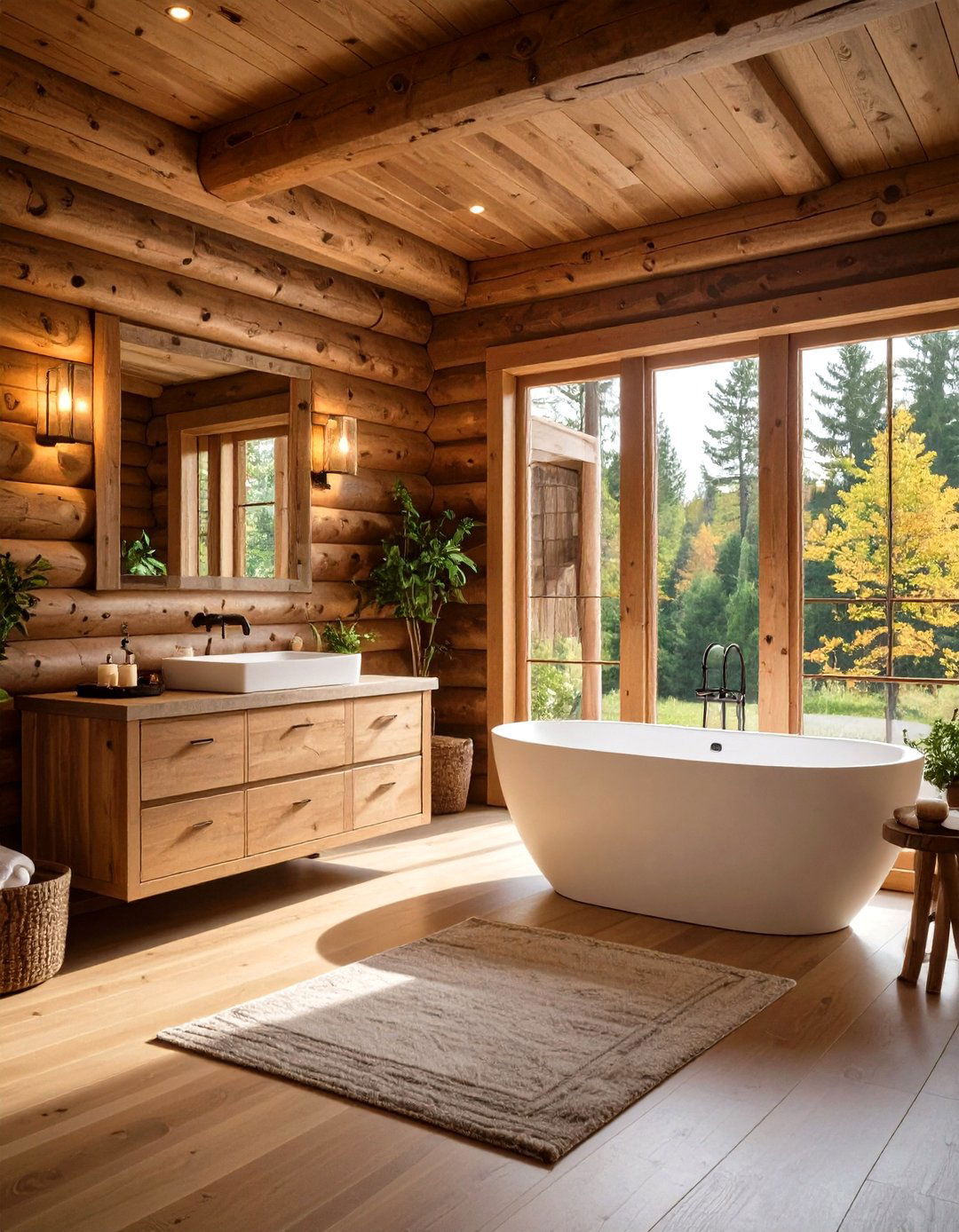
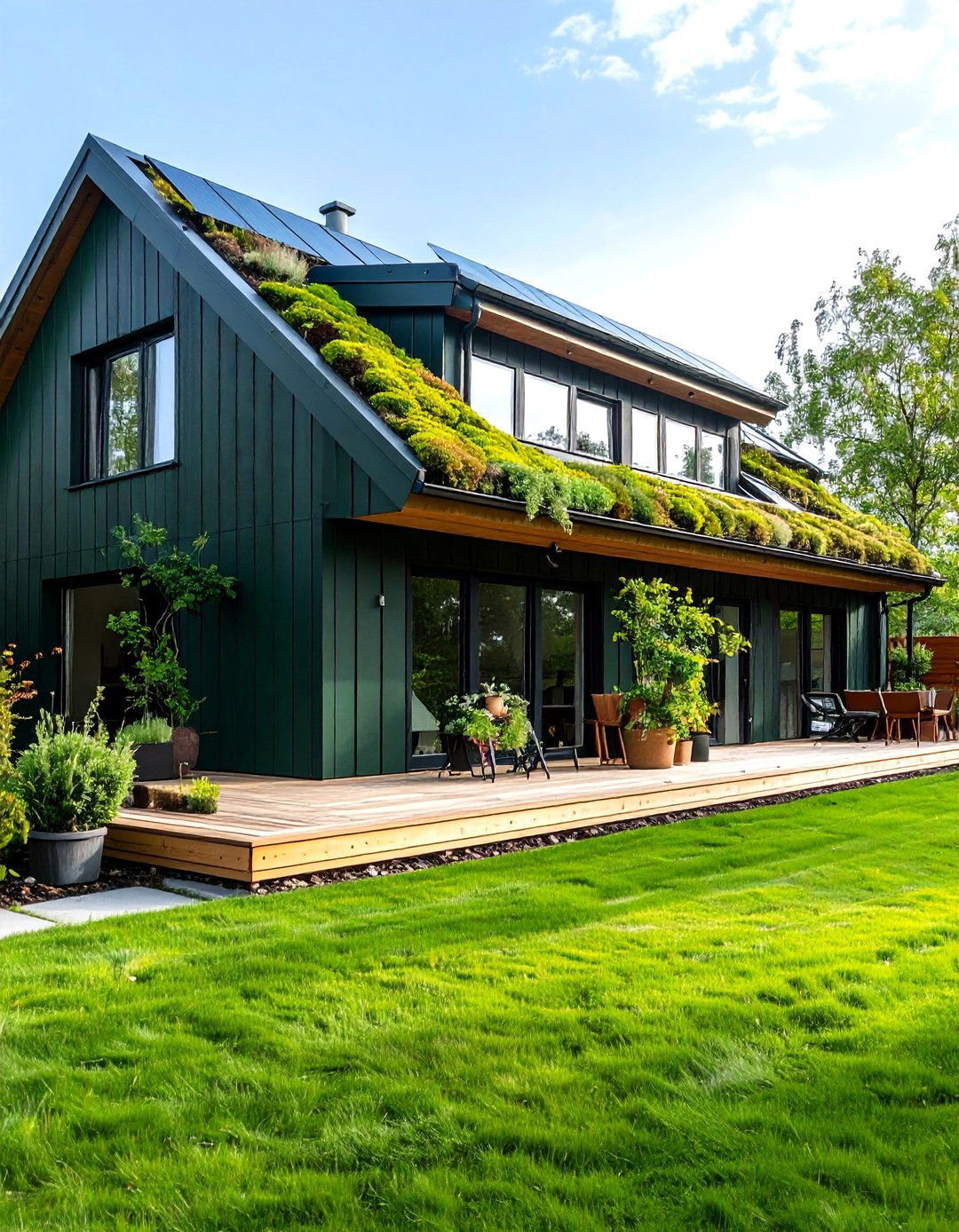
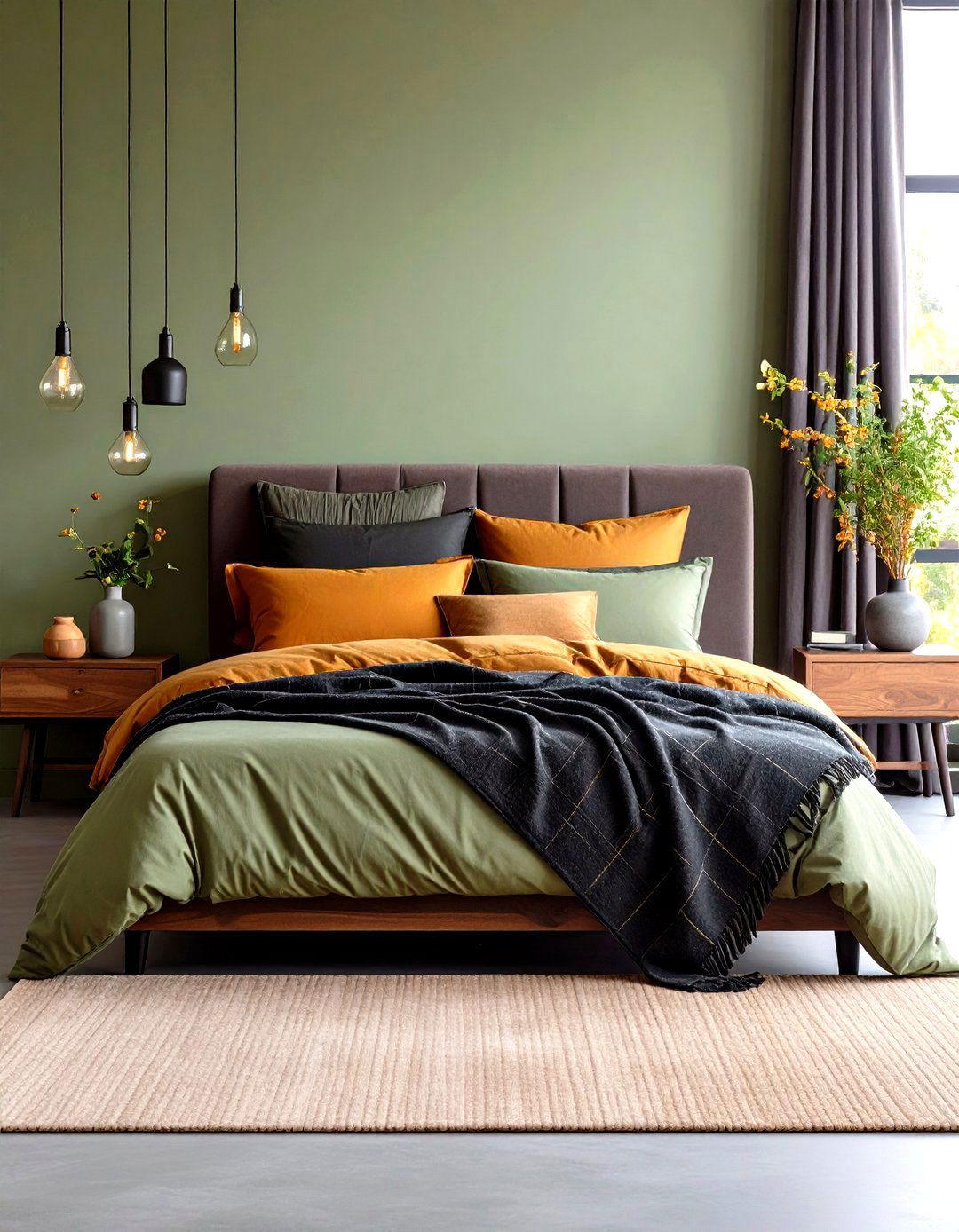

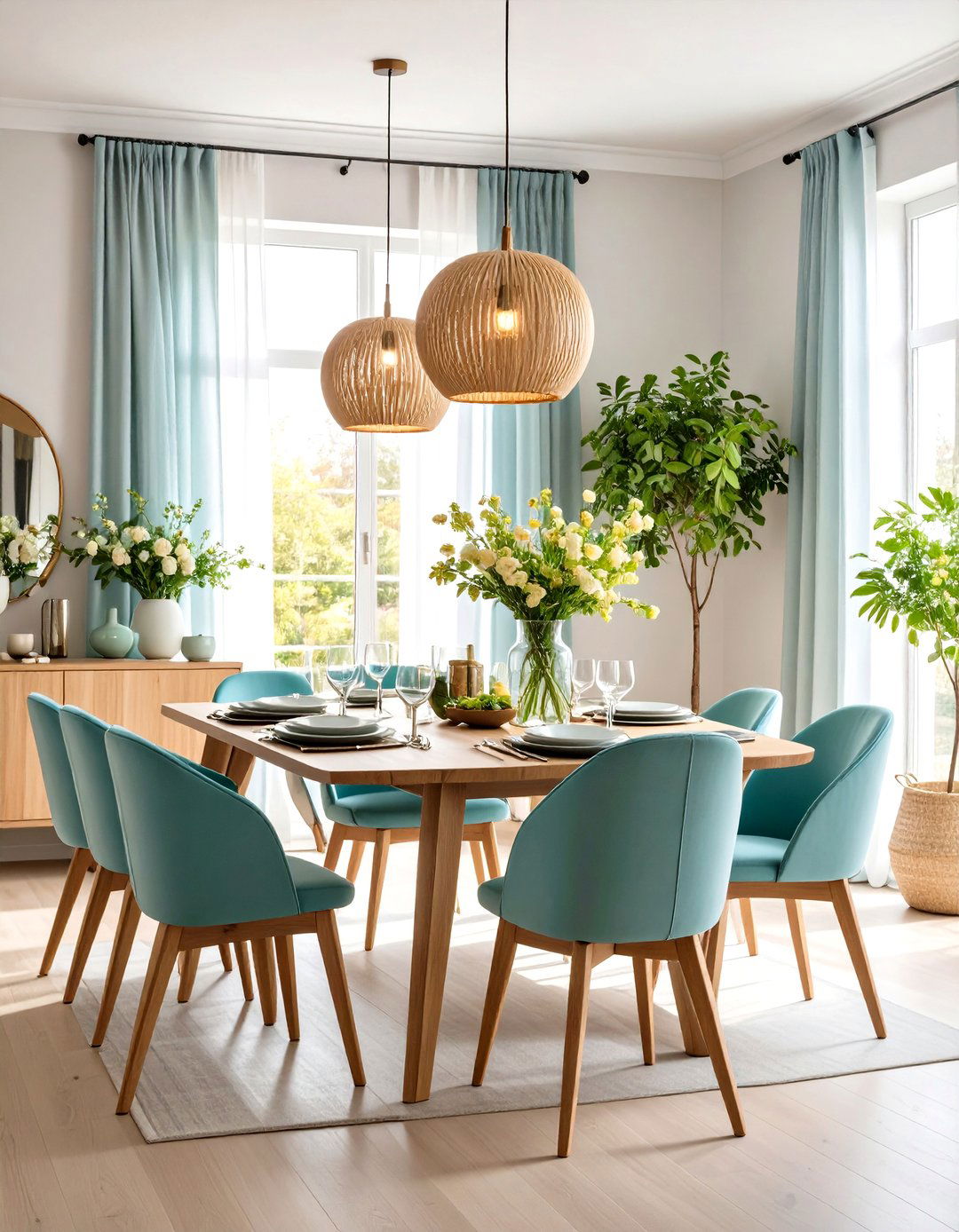
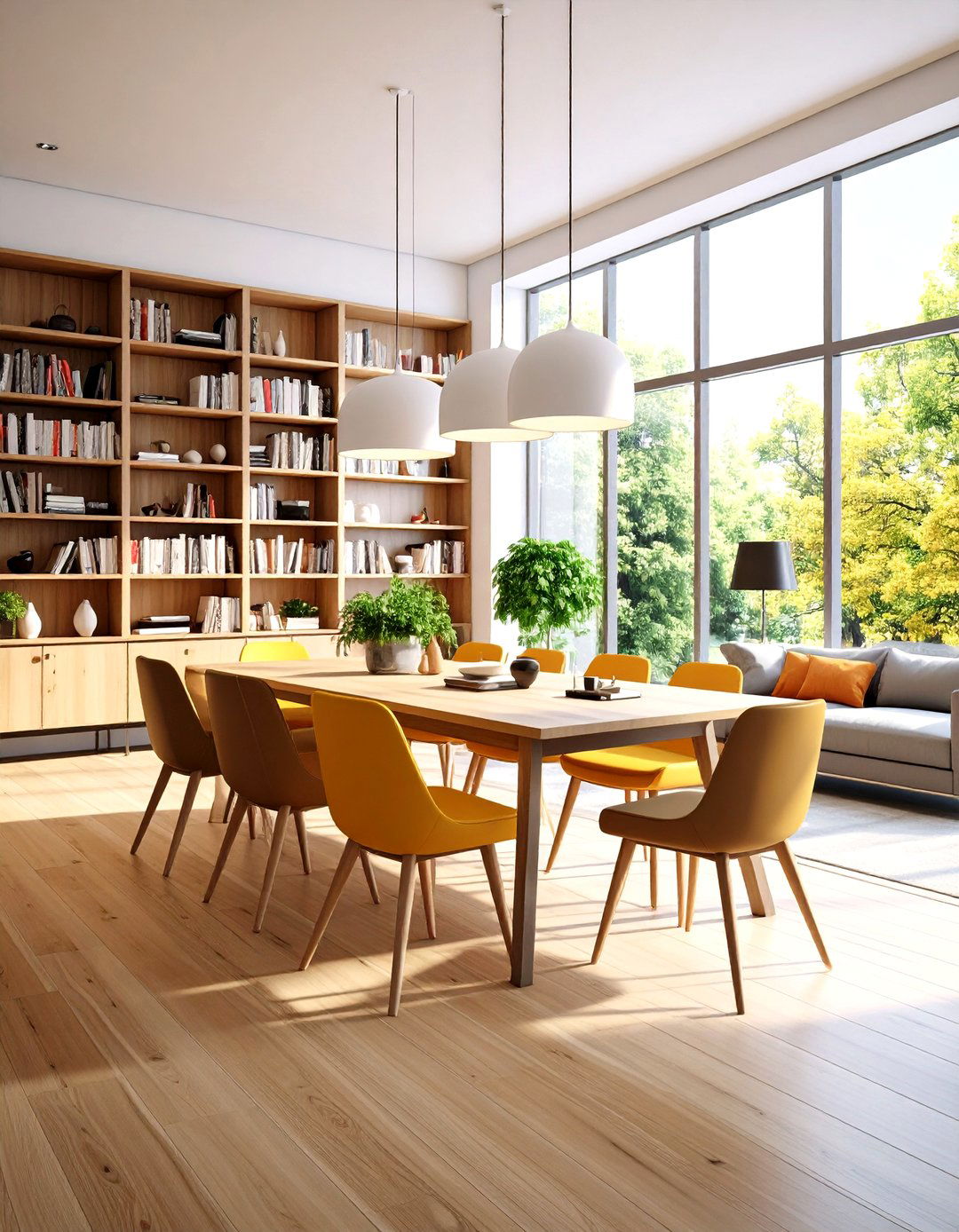
Leave a Reply